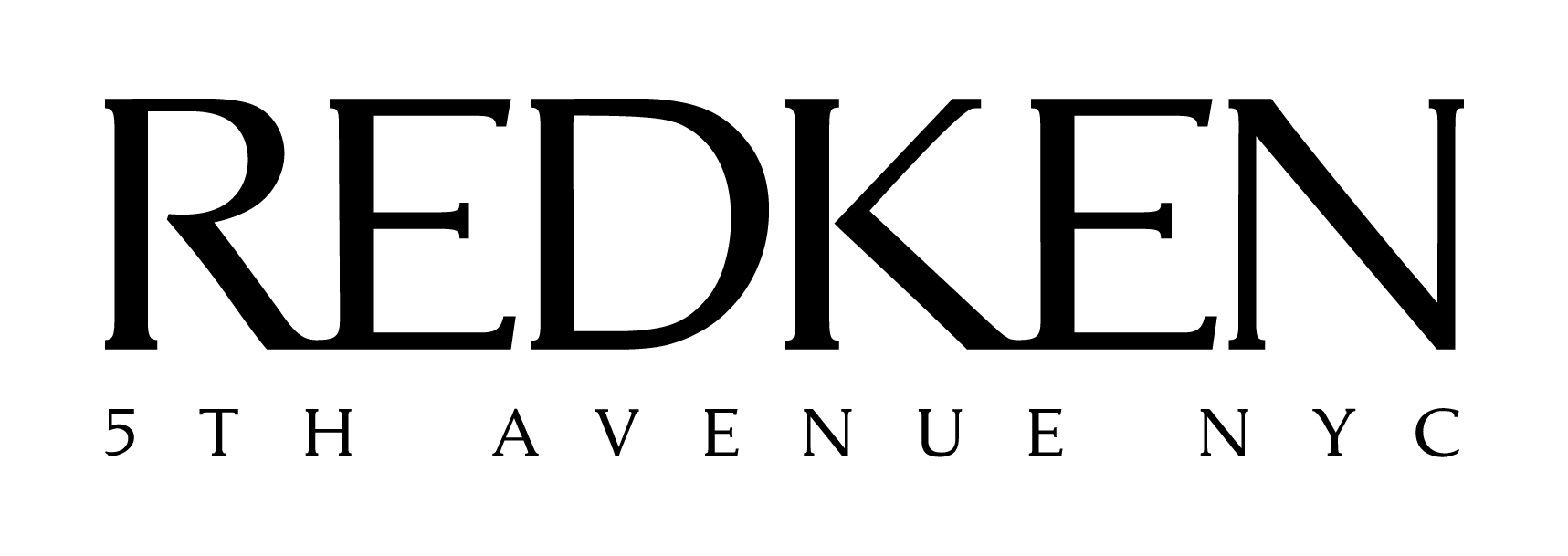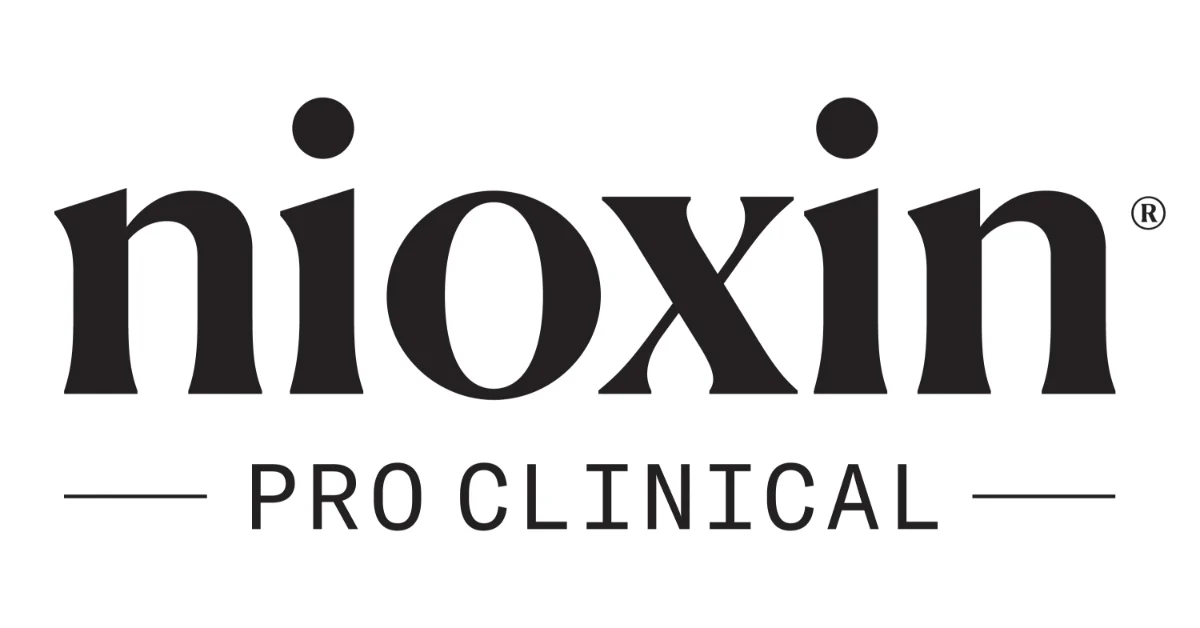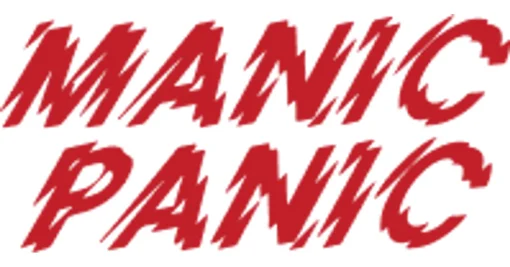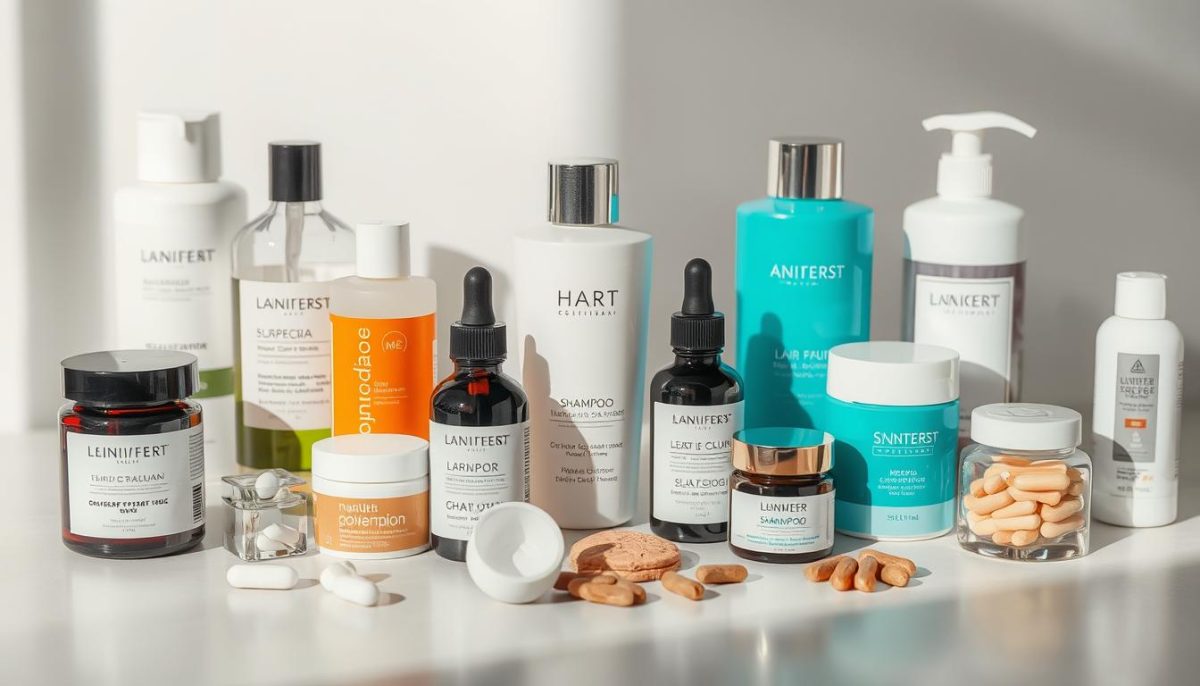FAQs, Hair Treatments, Hare Care
What products help with hair loss or thinning?
Ever wonder if we’re doing enough to fight hair loss? This question pops up as we look through all the products out there. Hair loss doesn’t pick who it hits – anyone can be affected. We often find ourselves searching for something that really works. This section talks about different kinds of products for growing hair back. We’re looking at stuff you can buy without a prescription, drugs doctors prescribe, natural ways, and treatments from professionals. Our goal is to understand what treatments work best for encouraging hair to grow and bring back our confidence.
Key Takeaways
- There are multiple categories of products aimed at tackling hair loss.
- Over-the-counter treatments often include minoxidil-based solutions.
- Prescription medications such as finasteride can be an option.
- Natural remedies may offer additional support in regrowth.
- Professional treatments provide targeted solutions for severe cases.
- Understanding our unique needs is key to selecting the right products.
- Consulting with experts can guide us in the right direction.
Understanding Hair Loss Causes
Starting to understand hair loss means looking into why it happens. Many things cause hair to thin, from our genes to how we live. Knowing why hair loss occurs helps us choose how to prevent or treat it.
Common Factors of Hair Loss
Hair thinning is affected by several factors. Stress, for one, can really harm our hair. Other reasons include:
- Poor diet lacking essential nutrients
- Medications that may have hair loss as a side effect
- Hormonal changes, particularly during pregnancy or menopause
Tackling these factors is key to managing hair loss.
Genetic Influences
Genes play a big part in hair thinning too. Androgenetic alopecia, also called male or female pattern baldness, is inherited. It happens when hair follicles react to hormones like DHT. Understanding our genes helps us find the right treatments.
Environmental Impact
Our surroundings also affect hair health. Things like pollution and strong hair products can lead to hair loss. Pollutants damage hair and follicles over time. Choosing the right products and considering our environment can protect our hair.
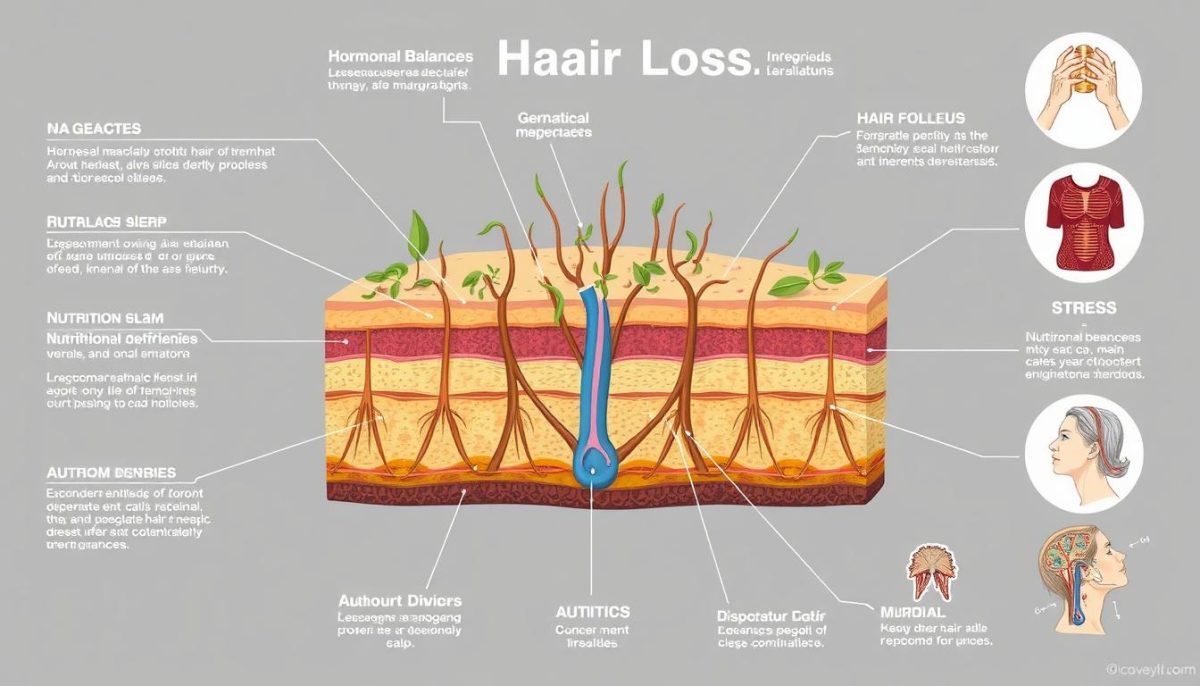
Over-the-Counter Treatments
In the search for hair loss solutions, over-the-counter options are great. Among these, products with Minoxidil are outstanding. This ingredient boosts blood flow to hair follicles, spurring growth. It’s a go-to for many with thinning hair.
Minoxidil: How It Works
Minoxidil makes blood vessels in the scalp wider, improving flow. This delivers more nutrients to the hair, encouraging growth. Regular use can thicken hair in about six months.
Best Brands to Consider
For Minoxidil treatments, some brands are top picks. These include:
| Brand | Formulation | Key Features |
|---|---|---|
| Rogaine | Foam, Liquid, Shampoo | Clinically proven, easy application |
| Equate | Liquid | Affordable alternative, effective |
| HairMax | Foam | Combines Minoxidil with herbal extracts |
Application Tips
To get the most from hair regrowth products, applying them right is key. Here’s how:
- Apply on a dry scalp, ideally twice a day.
- Use a measured dose for each application to ensure consistency.
- Massage the product gently into the scalp for better absorption.
- Avoid washing hair for at least four hours post-application.
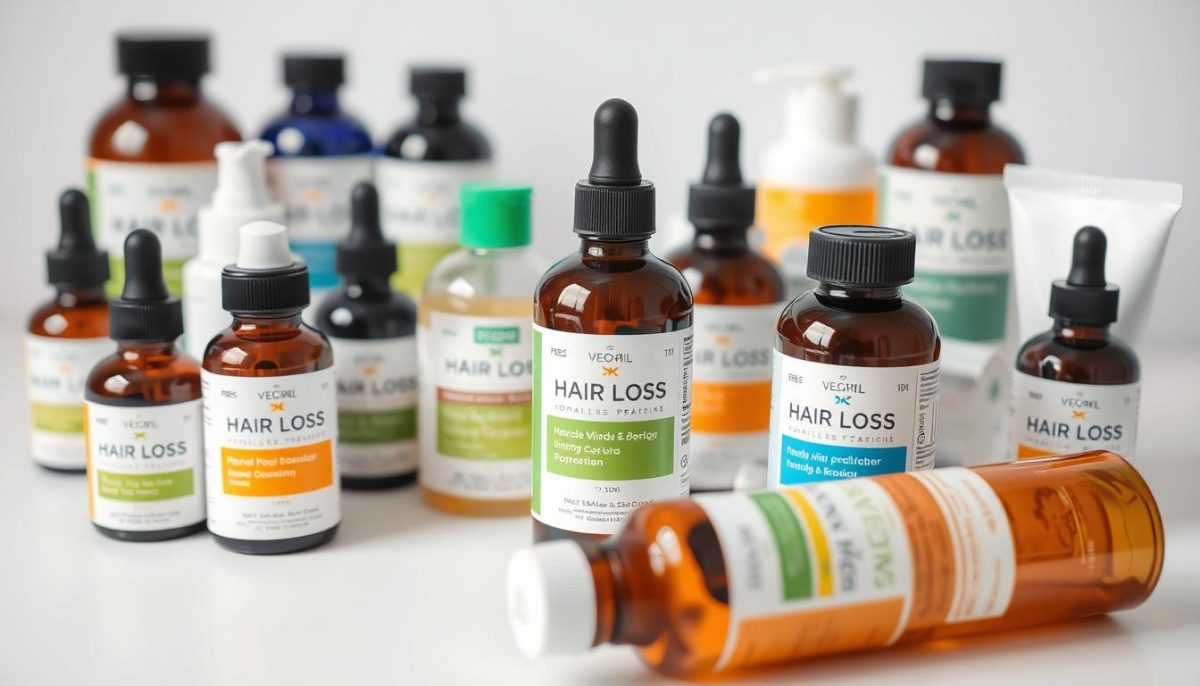
Prescription Medications
Managing hair loss often involves prescription medication. Finasteride is a popular one for male pattern baldness. It blocks the hormone causing hair loss in men, making it a preferred choice for slowing hair thinning.
Finasteride: Benefits and Side Effects
Finasteride is known for its potential to reduce hair loss. Some users may even see new hair growth. However, it’s important to know about possible side effects like reduced sexual function and mood swings. Considering these side effects before starting Finasteride is wise, as experiences vary.
When to Consult a Doctor
If you’re losing hair, talking to a doctor is key. They can find out if a health issue is causing your hair loss. It’s crucial to discuss all your symptoms to get the right treatment.
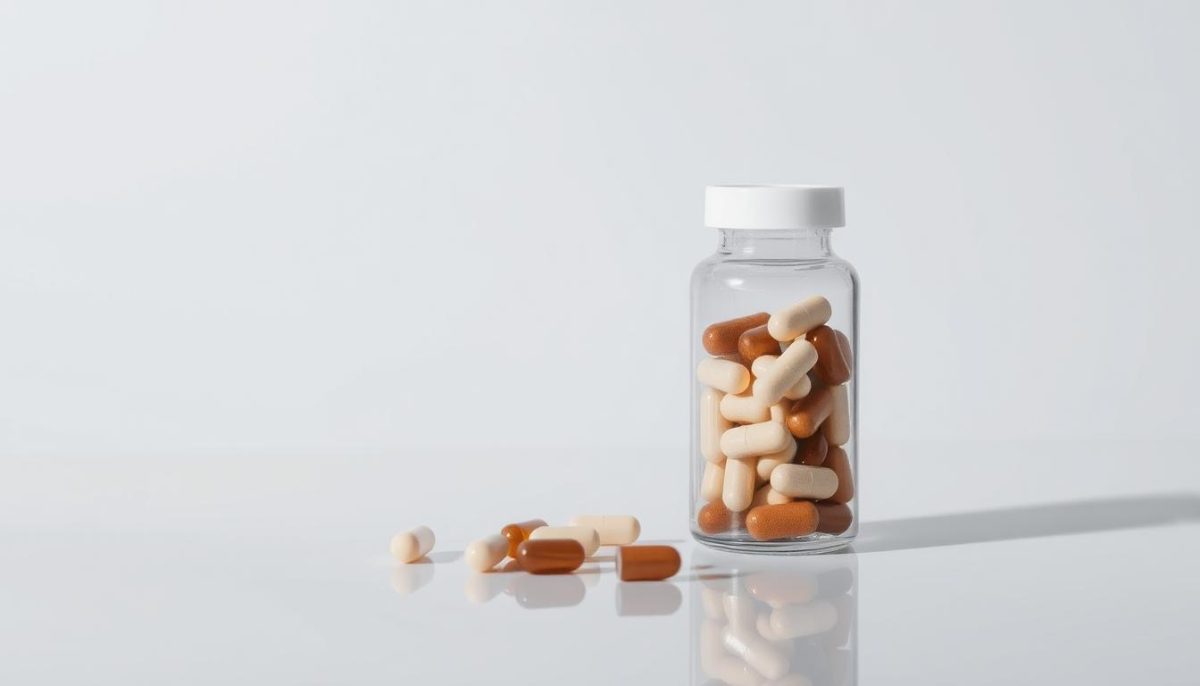
Natural Remedies for Thinning Hair
Looking into natural remedies for thinning hair offers many choices for better hair health. Adding essential oils, herbal supplements, and eating right can help hair grow back. Let’s explore these natural ways to boost our hair.
Essential Oils for Hair Growth
Essential oils are strong natural solutions for hair loss. Rosemary oil improves blood flow in the scalp, aiding in hair growth. Peppermint oil, besides smelling great, also helps hair grow. Rubbing these oils on the scalp often makes them work better, helping hair become denser.
Herbal Supplements Worth Trying
Using herbal supplements can be great for hair. Biotin strengthens hair, and saw palmetto fights hormone-linked hair loss. Both are good for making hair healthier and are important for caring for our hair.
Diet and Nutrition Tips
Eating well is key for healthy hair. Focus on vitamins A, C, E, and protein to boost hair health. Green veggies, nuts, seeds, and lean meats feed our hair. Good nutrition helps not just our hair but our whole body too.
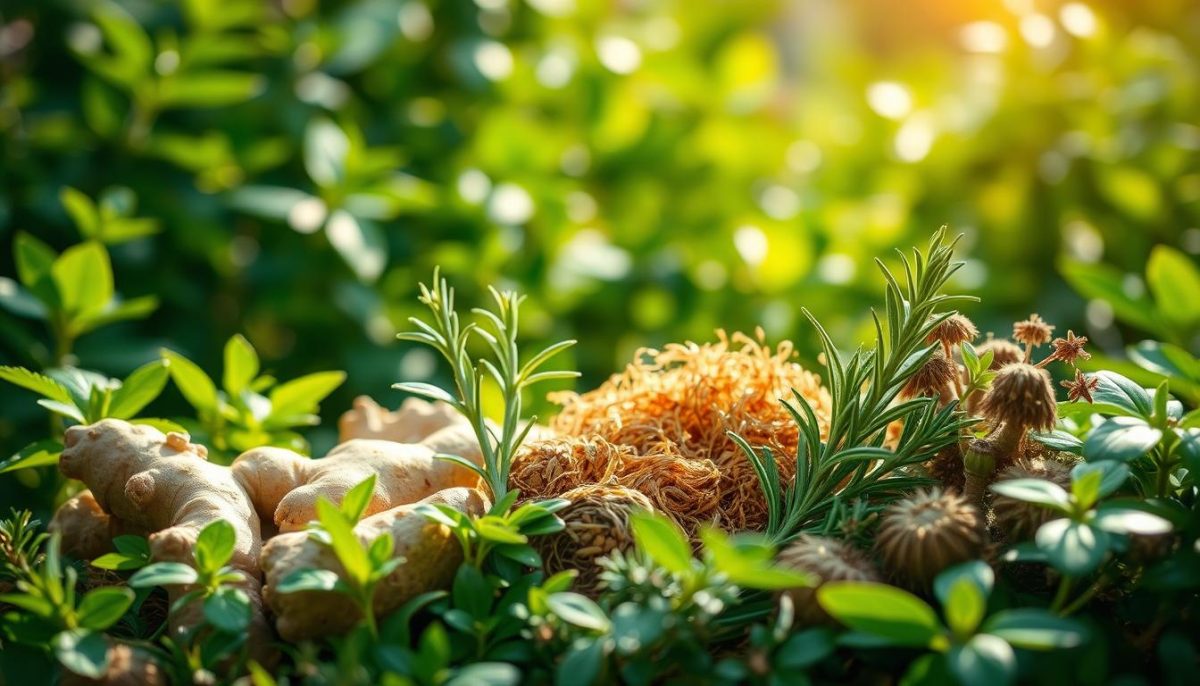
Hair Care Products That Can Help
If your hair is getting thinner, choosing the right products is vital. They can greatly improve how your hair looks and feels. Let’s look at shampoos, conditioners, and styling products that add volume and strength.
Shampoos Designed for Thinning Hair
Finding the perfect shampoo can keep your scalp healthy and tackle hair thinning. A great volumising shampoo doesn’t just clean your hair. It also feeds it to help it grow. Search for shampoos with biotin and caffeine. They wake up hair follicles and keep your scalp happy.
Conditioners with Strengthening Ingredients
Conditioning after shampooing is key, especially with products that thicken hair. These conditioners add moisture and make hair stronger, so it doesn’t break easily. Look for keratin and amino acids in the ingredients. They build up your hair, protecting it from damage.
Styling Products to Boost Volume
For those of us annoyed by flat hair, the right styling product can lift it instantly. Volumising mousses and sprays fake the look of thicker hair safely. Choose products that are light and don’t flatten your hair further, for a bouncy, full result.
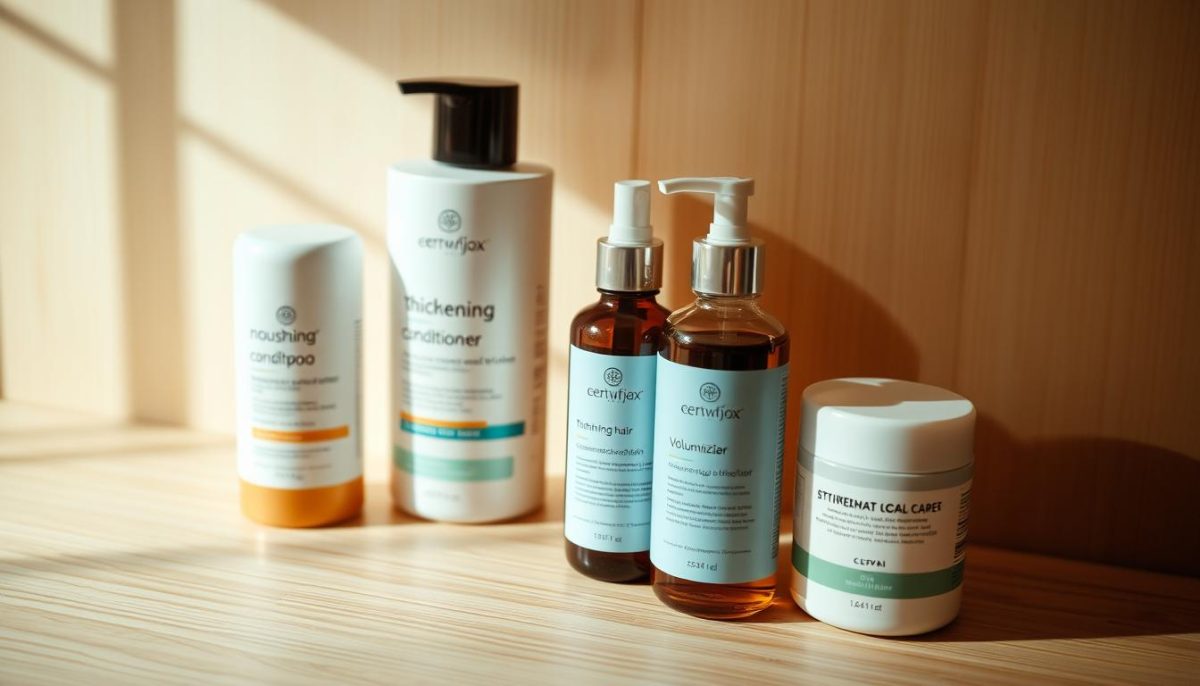
| Product Type | Key Ingredients | Benefits |
|---|---|---|
| Volumising Shampoo | Biotin, Caffeine | Promotes scalp health, energises hair follicles |
| Thickening Conditioners | Keratin, Amino Acids | Strengthens hair, reduces breakage |
| Styling Products | Lightweight Polymers | Creates volume, allows natural movement |
Hair Transplant Solutions
Looking into hair transplant choices gives hope to those losing hair. Learning about different methods helps us decide what’s best for us. There are two main types: Follicular Unit Extraction (FUE) and Follicular Unit Transplantation (FUT). It’s key to know how hair restoration works and the crucial care after to get good results and feel happy.
Types of Hair Transplant Procedures
Follicular Unit Extraction (FUE) is when hair follicles are taken one by one from a donor spot and moved to thinning areas. This way has less scarring and usually a faster healing time. Follicular Unit Transplantation (FUT) involves removing a strip of hair-rich skin and cutting it into grafts. Although it might need more time to heal because of the bigger cut, it can give a fuller look.
Post-Procedure Care
Looking after your hair properly after the transplant is key for the best outcome. You should take it easy and not do heavy exercises for a week to not harm your scalp. Keeping the scalp clean and moisturised helps with healing. Following the doctor’s instructions on medicine and hair products is important for your new hair. Going to all your check-ups lets the doctor see how you’re doing and address any worries.
Scalp Treatments and Massages
When we aim for healthy hair, scalp treatments and massages often don’t get enough focus. Yet, they are key for strong hair growth. By improving blood flow, scalp massages help awaken hair follicles.
The Benefits of Scalp Massage
Regular scalp massages are loaded with advantages. Here are the main ones:
- Improved blood flow boosts nutrient delivery to hair roots.
- They help lower stress, which can harm hair.
- They make scalp treatments more effective.
Recommended Products for Scalp Health
Choosing the right scalp health products is crucial. Pick those with calming elements, like:
- Peppermint oil for its cooling and circulation-boosting properties.
- Tea tree oil, known for fighting inflammation and germs.
- Biotin treatments for stronger hair.
Mixing these treatments into our hair care boosts our journey towards vibrant, thick hair. Focusing on scalp massage and top-notch products is the way to go for impressive results.
Lifestyle Changes to Support Hair Growth
Our hair’s health mirrors the lifestyle tweaks we apply. This includes how we handle stress and our sleep quality. Fighting stress is key to preventing hair loss. Good sleep helps our hair grow. By doing some activities, we end up feeling fresh, both in mind and body.
Stress Management Techniques
Learning to manage stress is vital for our overall health. Some good ways to do this include:
- Yoga: It calms our mind and makes us more flexible.
- Meditation: It helps us stay present and less stressed.
- Deep Breathing Exercises: These relax us and clear our minds.
- Engaging in Hobbies: Lets us enjoy ourselves and be creative.
Adding these activities to our life helps lower stress. This has a good effect on our hair health.
Importance of Sleep
Getting enough sleep is key for our body to fix itself. When we sleep well, our hair follicles repair themselves. Try to sleep 7-9 hours every night. Follow these tips:
- Establish a Sleep Routine: Sleep and wake up at the same time every day.
- Create a Relaxing Environment: Your bedroom should be dark, cool, and quiet.
- Avoid Screens: Don’t use screens for an hour before bed.
Making these changes can boost our sleep quality. This helps our hair get healthier.
Hair Growth Supplements
Many of us look for ways to help our hair grow well. Taking hair growth supplements is a good step. Certain vitamins and important minerals are key for strong, healthy hair.
Vitamins and Minerals for Healthy Hair
Choosing the right supplements is crucial. Biotin, for example, helps make keratin and improves hair growth. Vitamin D keeps hair follicles working properly. Minerals like zinc and iron keep the scalp healthy. Getting these nutrients ensures our hair stays vibrant.
How to Choose the Right Supplement
Picking the right hair supplement depends on our needs. Talking to a healthcare expert can give us advice. It’s important to check labels for quality and proven ingredients. Choose trusted brands for the best support for our hair goals.
The Role of Hydration
Hydration is key for healthy hair. When we think about keeping our hair healthy, we often forget how important drinking enough water is. Staying hydrated not only makes our hair follicles stronger but also betters our scalp’s health. Drinking plenty of fluids makes our hair more vibrant.
Staying Hydrated for Hair Health
For the best hair health, drinking plenty of water every day is crucial. Adding hydrating foods to our diet can also boost our hydration levels. This leads to hair that’s healthier, shinier, and stronger. Drinking different kinds of liquids helps with this.
Foods That Promote Hydration
Eating foods full of water helps us get more hydration and important nutrients. Great options include:
- Cucumber – Full of water and very refreshing
- Watermelon – Juicy and perfect for staying hydrated
- Leafy greens – Spinach and kale offer hydration and important vitamins
- Oranges – Rich in vitamin C and great for hydration
- Strawberries – Tasty and help with water intake
By drinking enough water and eating these hydrating foods, we create the perfect conditions for our hair to grow and thrive.
Expert Tips for Hair Maintenance
Good practices and smart choices are key to keeping hair healthy. By regularly trimming and choosing styles wisely, we can boost our hair’s health. Even simple tips can have a big impact over time.
Regular Trimming for Fuller Hair
Getting our hair trimmed often is essential for its health. By cutting off split ends, our hair doesn’t look thin or dull. Trimming every six to eight weeks keeps it looking full and encourages it to grow healthy. This also makes us feel good because our hair looks and feels better.
Avoiding Heat Damage
We all like how our hair looks after heat styling, but avoiding heat damage is crucial. High heat can make hair dry and brittle. Here are ways to protect your hair:
- Use a heat protectant spray before styling.
- Go for lower heat settings with styling tools.
- Don’t use heat styling too often to keep your hair’s natural health.
By following these steps, we help our hair stay healthy. This makes our hair remain strong and glossy.
Common Myths About Hair Loss
Knowing the myths about hair loss is key for anyone worried about hair health. Often, we hear wrong ideas about hair thinning which can cause needless worry. By clearing up these false beliefs, we step towards better hair care habits.
Debunking Hair Loss Misconceptions
The belief that wearing hats often leads to baldness is not backed by science. Indeed, hair loss mainly comes down to genetics and hormones. Here are some myths we should clear up:
- Wearing hats does not affect hair growth.
- Stress alone is not the sole cause of hair loss.
- Hair products do not contribute to hair thinning.
What Really Affects Hair Health
In learning the truths about hair thinning, it’s clear several key factors impact hair health. Genetics is a huge factor, as our family history often shows patterns of hair loss. Hormone changes, like those from thyroid problems, also play a big role. Lastly, some illnesses and lacking certain nutrients can thin hair.
| Factor | Influence on Hair Loss |
|---|---|
| Genetics | Determines likelihood and pattern of hair loss. |
| Hormonal Changes | Can contribute to thinning, especially in women due to menopause. |
| Medical Conditions | Conditions such as alopecia or thyroid issues can trigger hair thinning. |
| Nutrition | Lack of essential vitamins like biotin and iron can weaken hair. |
When to Seek Professional Help
Hair loss is tough to handle. Knowing when to get professional help is key. Look out for signs that show there’s a problem. Spotting these signs early can really help our hair stay healthy.
Signs That Indicate a Problem
We must be alert for signs of serious hair loss issues, such as:
- Sudden or rapid hair loss
- Patches of hair missing from the scalp
- Thinning hair that becomes noticeable over time
- Excessive shedding during everyday activities, such as brushing or washing hair
Consulting a Dermatologist
If we see any of these signs, it’s time to think about when to see a dermatologist. They can check us out, diagnose our problem, and create a treatment plan. Getting professional help for hair loss not only calms our worries but also leads to effective solutions for healthier hair.
Conclusion: Our Path to Healthy Hair
Maintaining healthy hair is more than using products. It’s about getting to the root of hair issues and picking the right treatments. When we take steps early, we can improve our hair’s health and feel better about how we look.
Embracing Our Hair Journey
Our hair journey is unique to each of us. It’s shaped by the choices we make and the treatments we try. We find our way better by mixing natural solutions with expert advice. This helps us care for our hair in a way that’s best for us, boosting our overall happiness.
Staying Informed on Hair Care Options
For healthy hair, staying up-to-date with hair care knowledge is key. We need to be committed to our hair’s well-being. By keeping up with new insights, our journey with hair care will continue to be rewarding.

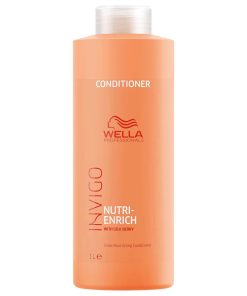 Wella Invigo Nutri-Enrich Deep Nourishing Conditioner 1000ml
Wella Invigo Nutri-Enrich Deep Nourishing Conditioner 1000ml 


